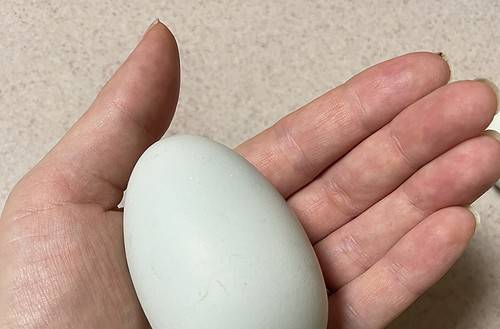15 Kid-Friendly Chicken Breeds- And Which Chickens to Avoid
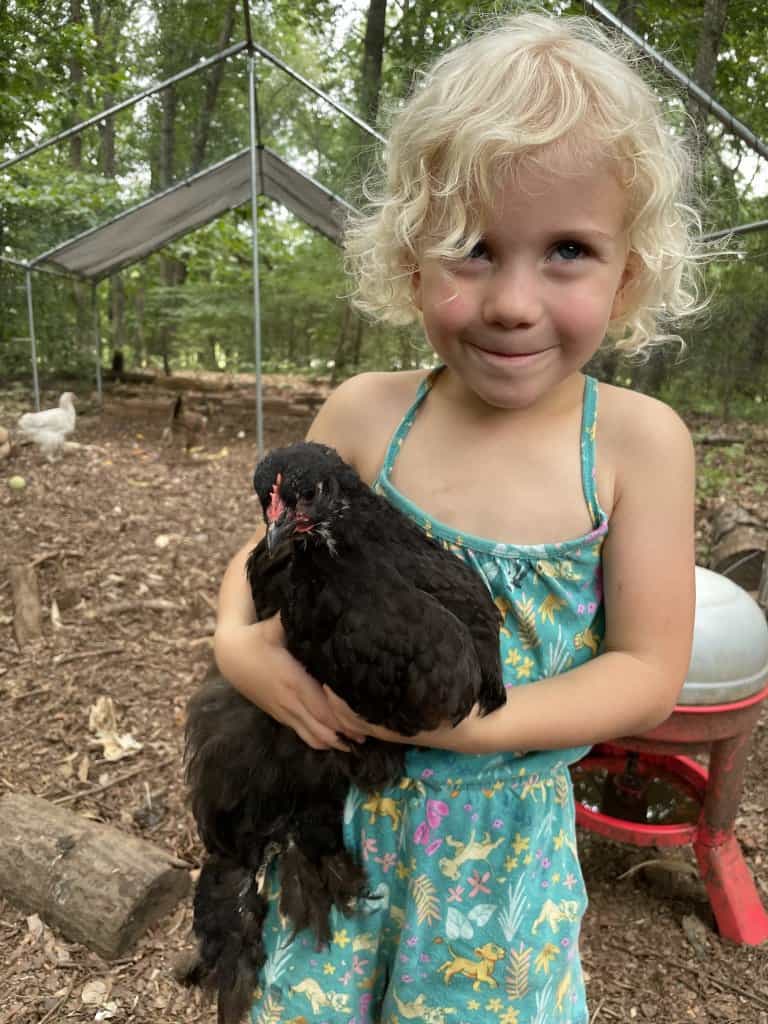
If you are wondering which chickens your family should start with, this list has helpful information about the friendliest chickens for beginners!
I independently review every product I recommend. When you make a purchase through a link, I may earn a small commission at no additional cost to you. Learn more
List of 15 Kid-Friendly Chicken Breeds
1. Orpington:

- Egg-citement: Orpingtons lay beautiful brown eggs.
- Egg-stravaganza: Expect around 200-280 eggs per year.
- Cluck-titude: These fluffy gals are as friendly as a golden retriever, easily scoring 5 out of 5 stars.
- Feathered Fun Fact: Orpingtons are known to be exceptionally broody, making them excellent mother hens.
- Appearance: Orpingtons are large, round birds with fluffy feathers that come in various colors like Buff (golden), Black, Blue, and White. Their friendly, teddy bear-like appearance makes them hard to resist.
2. Barred Plymouth Rock:
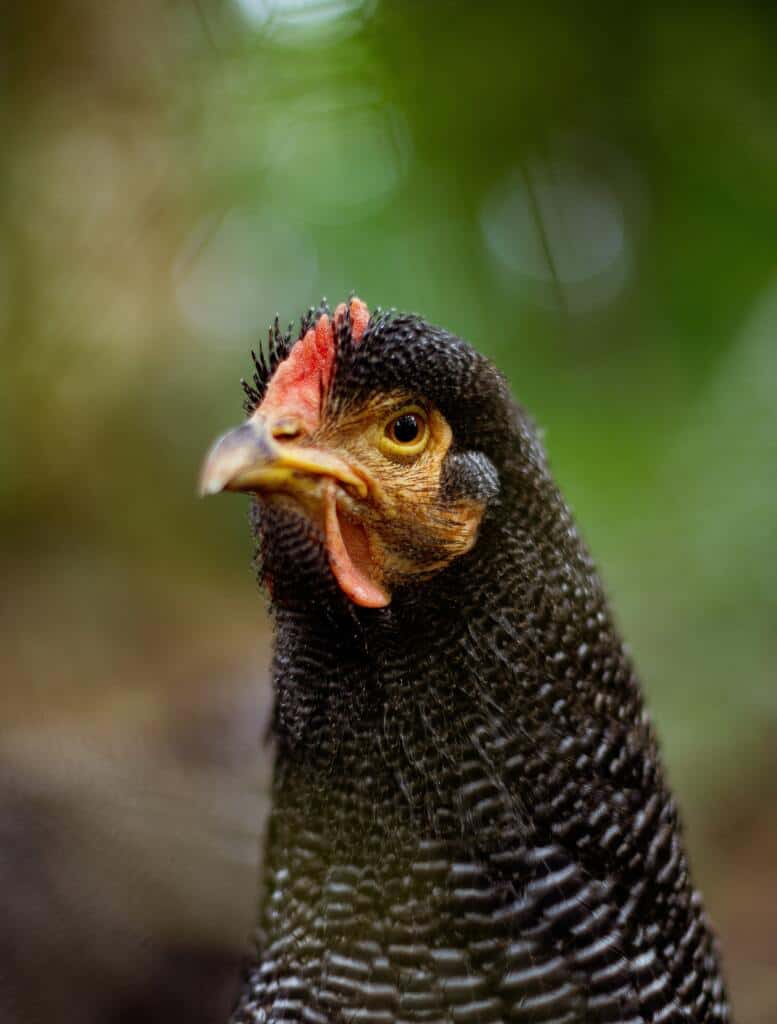
- Egg-citement: These ladies lay brown eggs that’ll brighten your breakfast.
- Egg-stravaganza: Expect 200-280 eggs per year.
- Cluck-titude: With their calm demeanor, Barred Plymouth Rocks are a solid 4.5 out of 5 stars for friendliness.
- Feathered Fun Fact: They’re excellent foragers, which can be a fun learning experience for kids.
- Appearance: Barred Plymouth Rocks have distinctive black and white stripes on their feathers, giving them a classic and timeless appearance.
3. Australorp:

- Egg-citement: Australorps lay plenty of large brown eggs.
- Egg-stravaganza: You’ll be gifted with approximately 250-300 eggs per year.
- Cluck-titude: They’re gentle giants, known for their calm and friendly nature, earning a solid 4.5 stars.
- Feathered Fun Fact: Australorps once set a world record by laying 364 eggs in 365 days!
- Appearance: Australorps have shiny black feathers that glisten in the sun, and they have a sleek and elegant look.
4. Rhode Island Red:
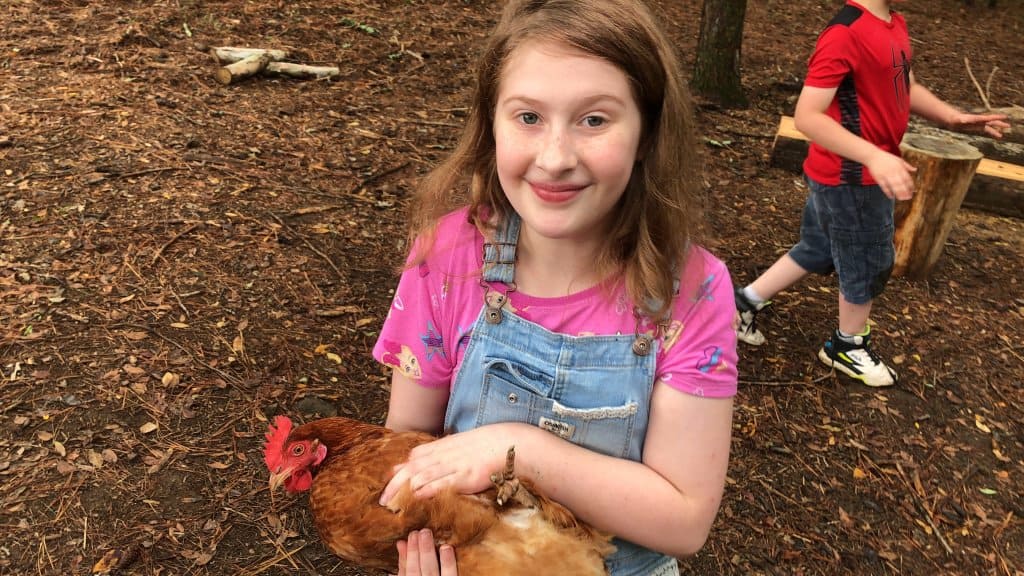
- Egg-citement: Rhode Island Reds provide brown eggs aplenty.
- Egg-stravaganza: Count on a robust 200-300 eggs per year.
- Cluck-titude: These ladies are friendly and inquisitive, earning a respectable 4 out of 5 stars.
- Feathered Fun Fact: Rhode Island Reds are known for their hardiness, making them great for beginners.
- Appearance: Rhode Island Reds are medium-sized birds with vibrant reddish-brown feathers that shine beautifully in the sunlight. They have a classic, rustic look that embodies the charm of the American countryside.
5. Silkie:
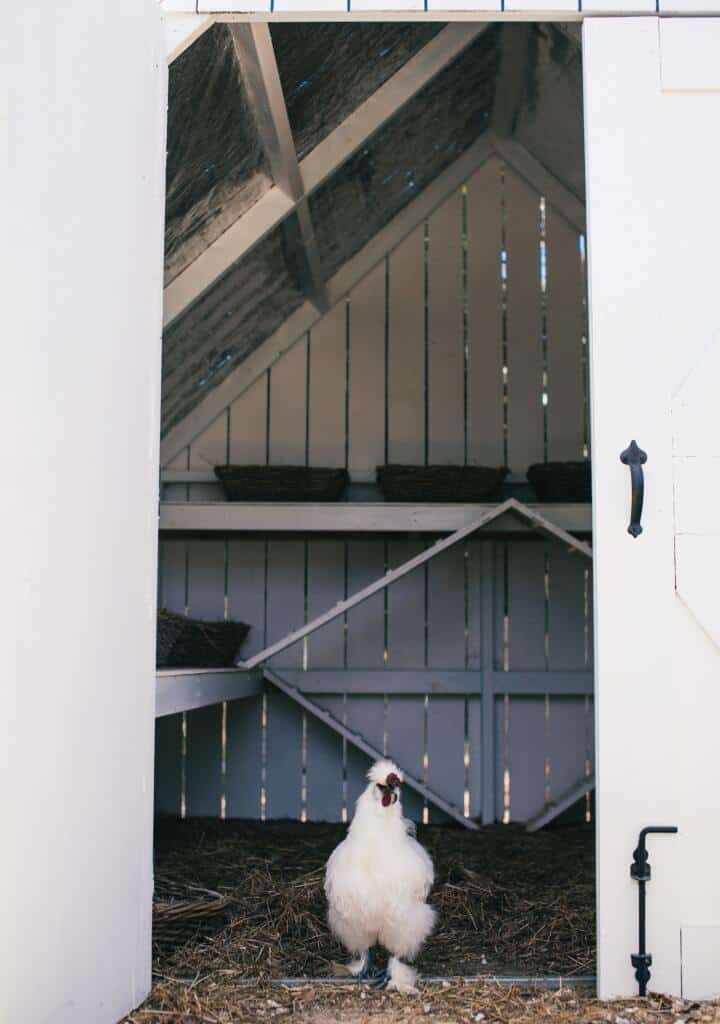
- Egg-citement: Silkies lay small cream or tinted eggs.
- Egg-stravaganza: They’re not the most prolific layers, giving you around 100-150 eggs annually.
- Cluck-titude: Silkies are charming, docile, and earn a solid 4.5 stars for friendliness.
- Feathered Fun Fact: Silkies are often described as the “lap dogs” of the chicken world due to their affectionate nature and fluffy plumage.
- Appearance: Silkies are small, fluffy balls of feathers. They have a unique appearance with feathers that resemble soft fur, feathered legs, and a crest on their heads.
6. Wyandotte:

- Egg-citement: Wyandottes lay brown eggs with style.
- Egg-stravaganza: Expect a dependable 200-250 eggs annually.
- Cluck-titude: These birds are known for their sweet personalities, earning a 4.5-star rating.
- Feathered Fun Fact: Wyandottes come in a variety of gorgeous feather patterns, making them quite the lookers.
- Appearance: Wyandottes are medium-sized birds with a round shape. They have a striking appearance with a laced feather pattern and a rose comb on their heads.
7. Brahma:

- Egg-citement: Brahmas lay large brown eggs.
- Egg-stravaganza: Anticipate around 150-200 eggs per year.
- Cluck-titude: They’re gentle giants and get a solid 4 out of 5 stars for friendliness.
- Feathered Fun Fact: Brahmas are known for their feathered legs, adding a touch of elegance to your flock.
- Appearance: Brahmas are impressively large and have a stately presence. They have feathered legs and a pea comb, and they come in various colors like Buff, Dark, and Light.
8. Cochin:
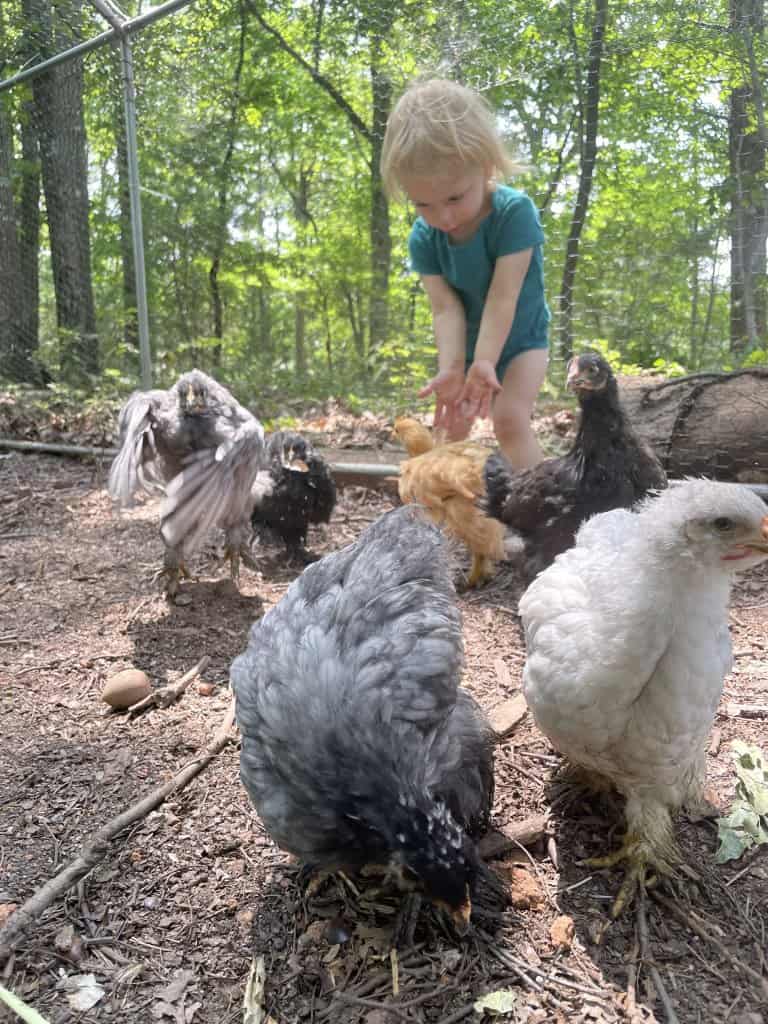
- Egg-citement: Cochins lay brown eggs.
- Egg-stravaganza: You can count on about 160-200 eggs each year.
- Cluck-titude: These fluffy birds are friendly and receive a 4-star rating.
- Feathered Fun Fact: Cochins are fluffy and make for excellent pets, particularly for kids.
- Appearance: Cochins are fluffy, round birds with feathered legs. They have a gentle and endearing appearance, often likened to a walking puffball.
9. Sussex:
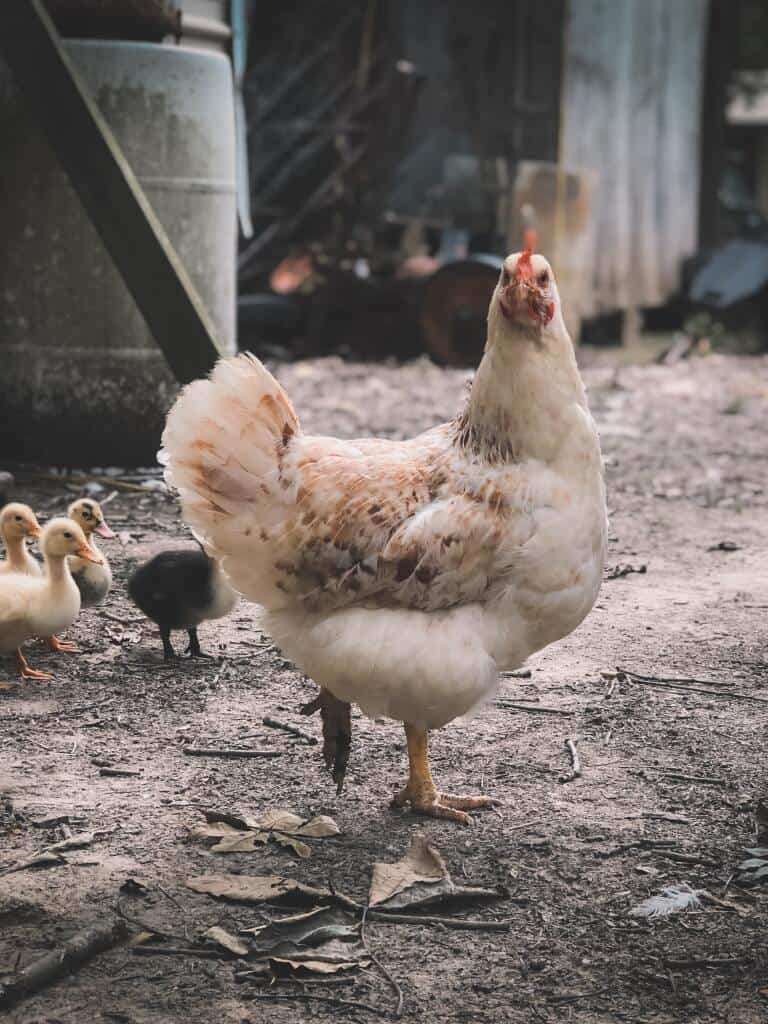
- Egg-citement: Sussex hens lay cream to light brown eggs.
- Egg-stravaganza: You’ll receive a solid 250-275 eggs annually.
- Cluck-titude: Sussex chickens are known for their gentle disposition, earning a 4.5-star rating.
- Feathered Fun Fact: They come in a variety of colors, adding a touch of diversity to your flock.
- Appearance: Sussex chickens have a classic farmyard look with speckled or solid-colored feathers. They are medium-sized and have a friendly appearance.
10. Leghorn:

- Egg-citement: Leghorns lay large white eggs.
- Egg-stravaganza: Expect an impressive 250-300 eggs per year.
- Cluck-titude: They’re active and independent, earning a 4-star rating.
- Feathered Fun Fact: Leghorns are excellent layers and thrive in free-range settings.
- Appearance: Leghorns are sleek, athletic birds with predominantly white feathers and a distinctive upright comb.
11. Polish:
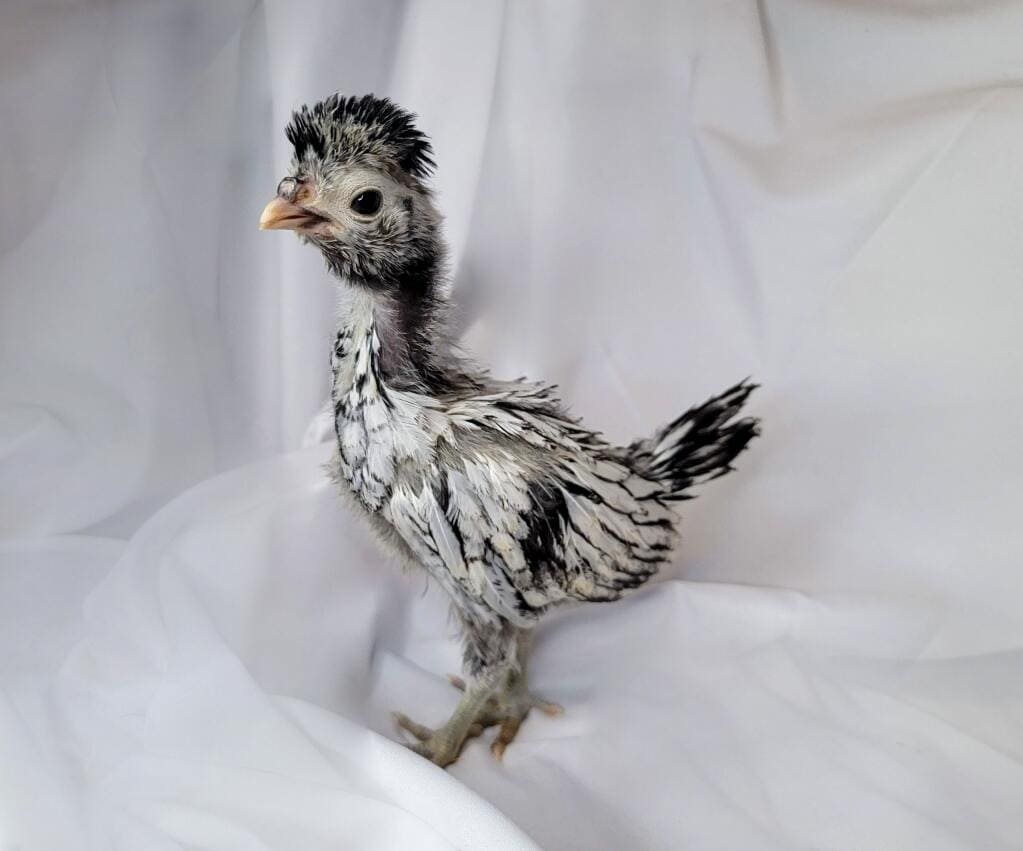
- Egg-citement: Polish hens lay white eggs.
- Egg-stravaganza: Anticipate around 200-250 eggs annually.
- Cluck-titude: With their quirky crests, Polish chickens are both charming and friendly, earning a 4.5-star rating.
- Feathered Fun Fact: Their distinctive crests make them look like they’re wearing feathered hats! The feathers tend to block their vision so plan for predator protection!
- Appearance: Polish chickens are known for their ornamental crests, which can obstruct their vision. They come in various colors, and their unique appearance adds a touch of whimsy to your flock.
12. Faverolle:

- Egg-citement: Faverolles lay light brown eggs.
- Egg-stravaganza: You can look forward to approximately 150-200 eggs each year.
- Cluck-titude: Faverolles are gentle and sociable, securing a 4.5-star rating.
- Feathered Fun Fact: They have fluffy faces and feathered feet, making them irresistibly cute.
- Appearance: Faverolles are medium-sized birds with fluffy feathers, a beard, and feathered legs. They have a charming and cuddly appearance.
13. Jersey Giant:

- Egg-citement: Jersey Giants lay brown eggs.
- Egg-stravaganza: Count on a substantial 200-250 eggs per year.
- Cluck-titude: Despite their size, they’re gentle giants, earning a 4.5-star rating.
- Feathered Fun Fact: Jersey Giants are one of the largest chicken breeds globally, making them impressive additions to your flock.
- Appearance: Jersey Giants are massive birds with a solid black or white appearance. Their size commands attention, and they have a majestic presence.
14. Ameraucana:
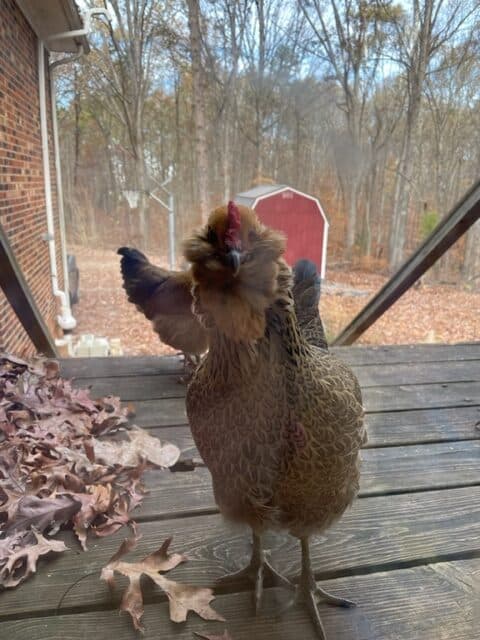
- Egg-citement: Ameraucanas lay blue eggs, a real egg-citing feature!
- Egg-stravaganza: Expect around 200-250 eggs annually.
- Cluck-titude: These birds are friendly and receive a 4-star rating.
- Feathered Fun Fact: Ameraucanas are known for their stunning blue eggshells, adding a splash of color to your egg basket.
- Appearance: Ameraucanas have a charming, rustic look with fluffy cheeks, muffs, and a beard. They come in various colors, but all share an endearing appearance.
15. Easter Egger:

- Egg-citement: Easter Eggers lay eggs in a variety of hues, including blue and green!
- Egg-stravaganza: You can anticipate 200-280 eggs each year.
- Cluck-titude: These colorful characters are as sociable as they come, also receiving 4 out of 5 stars.
- Feathered Fun Fact: Their eggs are a marvel of nature, surprising kids with a rainbow of colors.
- Appearance: Easter Eggers come in various colors and feather patterns. Their appearance can be quite diverse, making them a colorful and fun addition to your flock. For more about Easter Eggers and their Ameraucana parents read The Comprehensive Guide to Easter Eggers: Enigma of the Poultry Universe!
Additional Information About These Kid-Friendly Chickens:
- Free Range: All of these breeds generally do well as free rangers, with some variation in their foraging behavior. Be sure to provide a safe outdoor space for them.
- Broodiness: Orpingtons, Cochins, and Faverolles are known to be broody, meaning they may want to hatch eggs. This can be a fun learning experience for kids but may require some management.
- Ease of Care: Most of these breeds are relatively easy to care for, especially when given proper shelter, food, and water. However, remember that all chickens require daily attention and care.
Now you have a comprehensive guide to these delightful chicken breeds, helping you make the best choice for your family and homestead. Happy chicken-keeping!
Chickens to Steer Clear Of 🚫
While these 15 breeds are excellent choices, here are 5 that may not be the best fit for beginners with kids:
- Black Sumatra: These chickens are known for their skittish behavior, not ideal for families with young children.
- Gamefowl: Game birds can be aggressive and are best left to experienced poultry enthusiasts.
- Old English Game: Much like Gamefowl, they have a feisty disposition that might not mix well with kids.
- Phoenix: These stunning birds are flighty and easily frightened, making them a challenging choice for families.
- Malay: Known for their size and assertive personalities, Malays are not a good match for beginners or families.
With these fabulous 15 options, you’re bound to find the perfect feathered companions for your family’s backyard adventures. May your coop be filled with clucks, giggles, and lots of fresh eggs!
Now, you have a feathered rainbow of options to choose from, ensuring your family’s chicken-keeping adventure is both fun and egg-citing!
Enjoy Choosing Your Kid-Friendly Chicken Breed!

The world of backyard chickens offers a tapestry of colors, personalities, and egg-citing adventures for families with kids. Whether you choose the gentle and broody Orpington, the classic charm of a Barred Plymouth Rock, or the whimsical appearance of Polish chickens, each breed brings its unique flair to your homestead. If you would like to learn more about chicken eggs, how they are made, which chickens lay the most eggs, and when are they safe to eat check out the article covering everything you need to know about chicken eggs, Egg-cellent Eggs: From Farm to Table! The American Poultry Association has great resources for chicken owners, check them out if you want to learn more about specific breeds!
Remember, with proper care and attention, your feathered friends will reward your family with fresh eggs, endless entertainment, and valuable life lessons for the little ones. So, embark on this fantastic journey, and may your coop be filled with laughter, love, and the joyful sounds of contented hens.
Baby Chicks Care: A Beginner’s Handbook for Happy, Healthy Birds is a fantastic guide to getting started caring for baby chicks! Here is some helpful tips on How to Tame a Rooster.
Thank you for meeting me AT FORESTS EDGE. Where I am learning to grow food for my family and homestead while sharing my insights with you. I would love for you to join me on this journey, and subscribe to my newsletter where I share encouragement throughout the year as we GROW HOPE!
Until we meet again,
Raeanna




